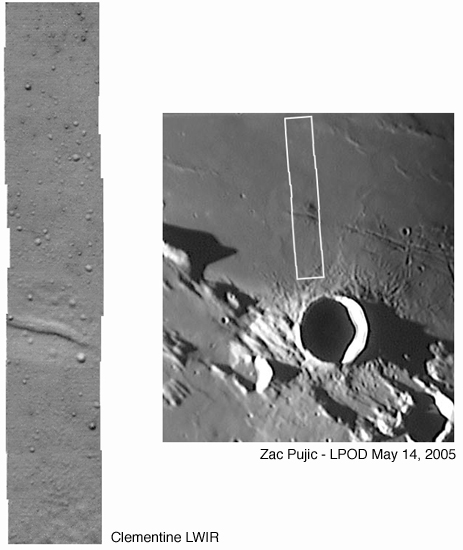May 25, 2005
An IR Strip Across a Kipuka
Image Credit: Phil Stooke |
|
An IR Strip Across a Kipuka What can you do when the Moon is hidden by clouds? Explore it with Clementine images! This image shows the kipuka (old surface surrounded by younger lavas) north of Menelaus, illustrated in LPOD on May 14. The vertical image strip is a mosaic of eleven Clementine long wavelength infrared (LWIR) images downloaded from NASA's Planetary Image Atlas. The original images are impossible to recognize, all useful details are lost in a sea of noise. But by averaging and subtracting the noise, the moon's surface is revealed. Because this is thermal infrared, warm surfaces (darker or facing the sun) are bright and cool surfaces (brighter or facing away from the sun) are dark. Small craters with dark surroundings are in reality fresh bright-ejecta craters. At the bottom we see the rough ejecta of Menelaus crater, and north of it the kipuka, split by a rille, rising above the surrounding plains. In most areas, these LWIR images are the highest resolution views from Clementine. Technical Details: Related Links: Yesterday's LPOD: Grand Central Station Tomorrow's LPOD: A New Kind of DHC |
|
Author & Editor: |
COMMENTS?
Register, Log in, and join in the comments.




